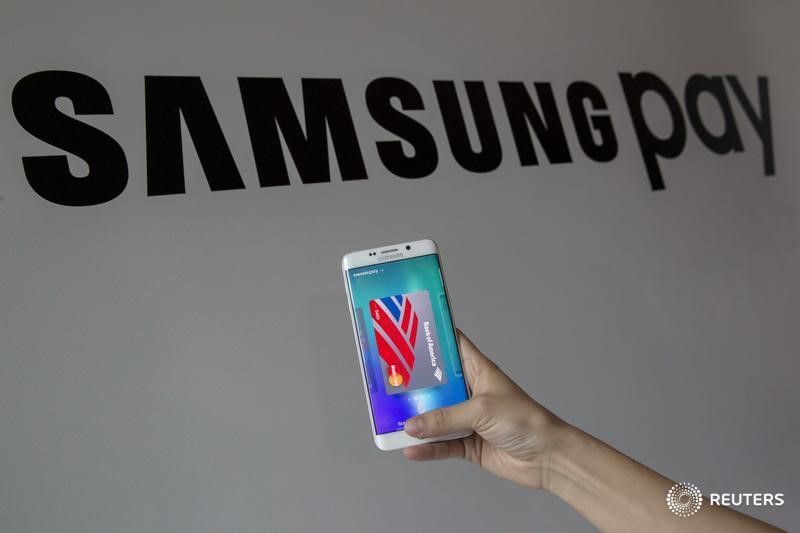TSX gains after CPI shows US inflation rose 3%
Investing.com -- BofA Securities has upgraded Samsung Electronics (KS:005930) to "buy" from "neutral" and raised its price objective to ₩75,000, up from ₩62,000, in a note dated Wednesday.
The change reflects better-than-expected earnings, a low valuation, and reduced concern over potential US tariffs.
Shares of Samsung, currently trading at ₩53,500, offer over 30% upside based on a return to a 1.2x price-to-book multiple.
The stock trades at just 0.9x 2025–2026 estimated book value—among its lowest levels historically.
Samsung reported a preliminary operating profit of ₩6.6 trillion for the first quarter of 2025, topping consensus estimates of ₩5–5.7 trillion.
The outperformance was driven by higher-margin DRAM sales, supported by DDR5 demand, and meaningful cost cuts in smartphones. Together, these segments offset continued losses in NAND and foundry operations.
Analysts at BofA project continued improvement through the year, with quarterly operating profits forecast at ₩6.9 trillion in Q2, ₩10.1 trillion in Q3, and ₩11.3 trillion in Q4.
Gradual memory price recovery, the rollout of 12-hi HBM3e, more efficient foundry operations, and an increase in smartphone production outside Vietnam are expected to support this growth.
For 2025 and 2026, Samsung is projected to generate ₩35 trillion and ₩44 trillion in operating profit, respectively—above mid-cycle levels, even as unit sales remain below historical trends.
BofA sees room for margin improvement, especially in DRAM, where margins could rise from 32% in Q1 to 37% by Q4.
While geopolitical trade tensions persist, BofA believes the direct earnings impact of potential US tariffs will be limited.
Less than 10% of Samsung’s global sales are derived from direct US exports, and just over 20% of its smartphones are shipped to the US—mostly produced in Vietnam and India.
The brokerage also points to Samsung’s ability to offset tariff burdens through retail price adjustments and production shifts to Korea, Brazil, and ASEAN countries.
Even under scenarios involving 25–54% tariffs, BofA's analysis suggests less than 10% downside to operating profit.
The brokerage also sees opportunities for Samsung to gain share in Europe and emerging markets should Chinese OEMs face tighter US restrictions.
BofA expects only modest pricing gains in DRAM and NAND—around 2–5% quarter-on-quarter through the rest of 2025—but says this will be enough to lift overall profitability.
While SK Hynix leads in high-bandwidth memory, Samsung’s shipments of 12-hi HBM3e are expected to begin in late Q2, with the company reaching around 30% market share by year-end.
With competitors not expanding capacity aggressively, Samsung is positioned to retain leading roles in both conventional memory and the growing HBM segment.
BofA’s new price target is based on a 1.2x price-to-book ratio, around 10% below the historical average but seen as conservative given the company’s fundamentals.
Analysts point to Samsung’s strong cash position—potentially reaching ₩100 trillion by year-end—alongside a 3% dividend yield and a ₩10 trillion share buyback program running through November 2025.
Korean equities could also benefit from improved investor sentiment. According to BofA strategist Ritesh Samadhiya, Korea’s “risk-love” indicator remains at historically low levels.
Back-testing of similar episodes since 1995 shows a 78% chance of positive returns over the next six months, with a median gain of 17%.
Downside risks remain, including potential setbacks in HBM execution, further memory price weakness, rising foundry losses, or a sharp increase in capex.
However, upside catalysts include new orders from US Big Tech clients, pricing power in memory, restructuring efforts, and more generous shareholder payouts.
